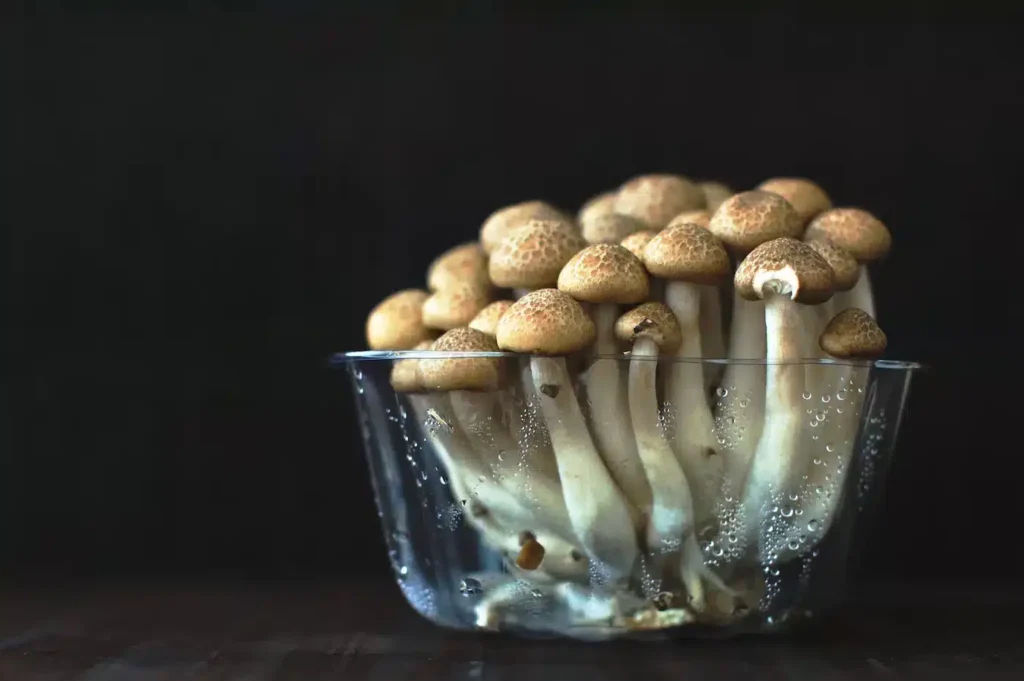
How To Store Shrooms: Which Ways are the Best?
Before we jump into these 6 most common storage techniques of How To Store Magic Mushrooms, it’s important to remember that all of these methods are affected by 3 factors: light, temperature, and moisture.
Exposure to UV light or sunlight can degrade the active constituents in your mushrooms, and while this may not always lead to spoilage, you may find that upon ingestion, the effects are no longer potent.
Temperature, on the hand, can absolutely lead both to spoilage and degradation. Hot temperatures in particular can cause mold and bacteria to grow quickly on your stash.
Moisture is also an additional factor with big consequences. Moist environments can increase bacteria and mold growth, leading to quicker spoilage.
It’s best to know how to store shrooms in either a location or container which offers protection from UV light exposure and a cool and dry environment.
1. Room Temperature
How To Store Magic Mushrooms: When storing magic mushrooms at room temperature, you simply keep them in a discreet location in your home without refrigeration or any special equipment or technique.
This form of storage is best for those looking to ingest the mushrooms soon after acquiring them, and it is important to find a location that limits exposure to light, moisture, and hot temperatures which will lead to an even shorter shelf life.
Pros: Convenience
Cons: Quick degradation or spoilage, not a long-term solution
2. Refrigerator
Storing magic mushrooms in a refrigerator involves keeping them at a temperature just above freezing.
The effectiveness of this strategy is also dependent on whether or not the mushrooms are refrigerated in an airtight or sealed container versus simply refrigerating them in an open bag or container. Air tight is always best here.
Pros: Extended freshness, slows down growth of mold and bacteria
Cons: Not a long-term solution, freshness and potency can diminish if not stored properly
3. Freezer
Freezing magic mushrooms is an effective and convenient means of long-term storage. Remember that sealing them airtight and at sub-zero temperatures can help prolong their shelf life drastically.
It may also be necessary to dry them first before storing them in freezing temperatures, because the freezing temperatures may interact with the excess moisture.
Pros: A long-term storage solution, relatively convenient
Cons: Proper packaging, such as vacuum-sealing or airtight containers, can be necessary to prevent freezer burn and moisture absorption
4. Dried
How To Store Magic Mushrooms: Mushroom dehydration removes the moisture content, usually through air drying or a food dehydrator, and then storing them in an airtight container.
Pros: Significantly increased shelf life
Cons: Drying can alter the texture and flavor of magic mushrooms, requires patience and careful attention to moisture levels during the drying process
5. Canned
Canning magic mushrooms involves placing them in a vacuum-sealed jar or using canning equipment to create a sealed container.
Pros: Canning magic mushrooms in a vacuum-sealed jar or canning equipment can provide a long shelf life, often exceeding a year. This method is effective at keeping out air and moisture.
Cons: Canning may require specialized equipment and can be time-consuming. Improper sealing or contamination can lead to spoilage.
6. How To Store Magic Mushrooms In Products & Goods
Incorporating magic mushrooms into food products which preserve the integrity of the psychedelic properties is a common way of utilizing magic mushrooms. The most common methods are in honey and chocolate bars.
High sugar content in the honey helps extend the potency and prevent mold or bacteria from ruining the mushrooms. Chocolate is similar, and journeyers often take this in the form of a mushroom chocolate bar.
Pros: Extends shelf life, makes dosing fun and enjoyable, discreet consumption and storage
Cons: Potency is dependent on how the product is prepared, dosing may be more difficult to plan or predict
